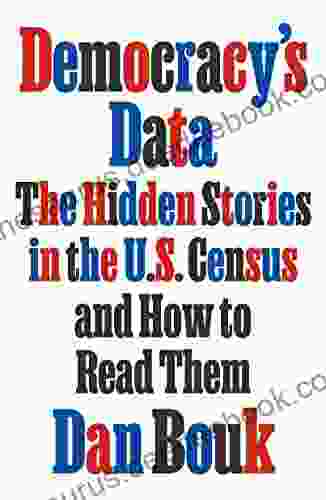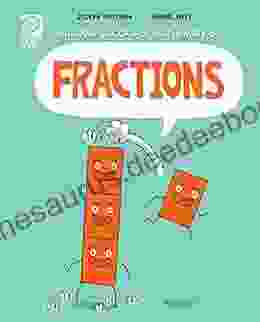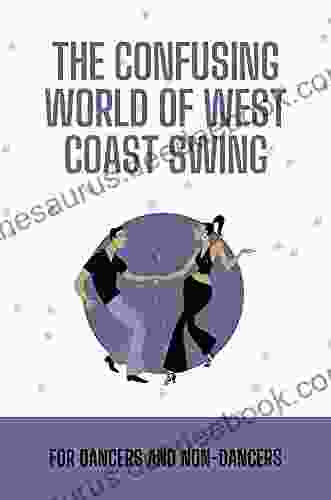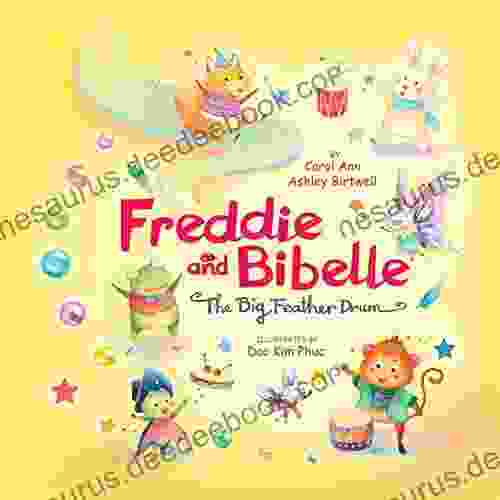The Hidden Stories in the Census: A Comprehensive Guide to Reading Them

The census, an indispensable tool for historians, genealogists, and social scientists, holds a wealth of hidden stories waiting to be discovered. Beyond the raw numbers and statistics, each census entry conceals a tapestry of personal experiences, societal trends, and the evolution of our communities. This comprehensive guide will empower you with the knowledge to unlock these hidden narratives, transforming the census from a mere data set into a vibrant chronicle of human history.
5 out of 5
| Language | : | English |
| File size | : | 5130 KB |
| Text-to-Speech | : | Enabled |
| Screen Reader | : | Supported |
| Print length | : | 384 pages |
Historical Background: The Genesis and Evolution of the Census
The concept of a census dates back to ancient civilizations. In the 6th century BC, King Servius Tullius of Rome ordered the first recorded census to establish a system of taxation and military recruitment. Over the centuries, the census became an essential tool for governments to manage their populations, allocate resources, and track societal changes.
In the United States, the first census was conducted in 1790, as mandated by the Constitution. The decennial census has since become an integral part of American history, providing a snapshot of each decade's population composition, economic conditions, and social trends. The US census has evolved over time, expanding in scope and detail to reflect the nation's changing demographics and needs.
Navigating the Census: A Step-by-Step Guide
Accessing and interpreting census records can be a daunting task. Here's a step-by-step guide to help you embark on this journey:
- Identify the Right Census: Determine the time period and location of interest. The US National Archives and Records Administration (NARA) provides online access to census records.
- Understanding the Census Form: Each census year has its unique questionnaire. Familiarize yourself with the specific questions asked and the formatting of the records.
- Locating Your Ancestors: Use the census index to search for specific individuals or surnames. Be prepared to refine your search with additional information, such as age, occupation, or address.
- Deciphering the Data: Once you locate the census record, carefully examine the information provided. Pay attention to details such as age, birthplace, occupation, family structure, and literacy levels.
- Contextualizing the Data: Census records reflect the social, economic, and political climate of the time. Consult historical context, such as local histories, county histories, and biographies, to gain a deeper understanding of the lives captured in the census.
Unveiling the Stories: Unlocking the Census's Potential
The census provides a wealth of information about the lives of our ancestors and the communities they lived in. Here are some examples of the hidden stories that can be revealed:
- Personal Narratives: Census records offer glimpses into the personal journeys of individuals, their occupations, education, and family relationships.
- Migration Patterns: The census data can trace the movement of populations over time, shedding light on immigration, emigration, and the westward expansion of the United States.
- Economic Conditions: The census provides insights into economic disparities, occupational trends, and the distribution of wealth within communities.
- Social Structures: Census records reveal family structures, household composition, and gender roles, offering a window into the social fabric of past societies.
- Historical Events: Census data can be used to analyze the impact of historical events, such as wars, famines, and epidemics, on population dynamics and societal changes.
Beyond Genealogy: The Broader Value of Census Records
While the census is invaluable for genealogical research, its significance extends far beyond tracing family trees. Census data provides essential information for a wide range of disciplines, including:
- Historical Research: Historians use census records to study demographic trends, social mobility, and the evolution of communities over time.
- Social Science Research: Sociologists and economists analyze census data to understand social inequalities, economic disparities, and the impact of social policies.
- Urban Planning: Census data assists urban planners in understanding population distribution, housing needs, and infrastructure requirements.
- Business and Marketing: Businesses use census data for market research, identifying target demographics and economic trends.
- Public Policy: Policymakers rely on census data to make informed decisions regarding healthcare, education, transportation, and other public services.
Cautions and Considerations: Interpreting Census Data Critically
While the census is a valuable resource, it's important to approach it with critical thinking. Consider the following cautions:
- Accuracy and Coverage: Census data may contain errors or omissions due to factors such as undercounting, misreporting, and data processing issues.
- Confidentiality: Census records are subject to confidentiality laws, which protect the privacy of individuals. Access to certain records may be restricted, especially for recent censuses.
- Bias: Census data can reflect the biases of the time, such as racial prejudices or social norms.
- Historical Context: Always interpret census data within its historical context to avoid misunderstanding or anachronistic interpretations.
The census is a rich tapestry of information, weaving together the threads of personal stories, societal transformations, and the enduring legacy of our collective past. By delving into the hidden narratives contained within census records, we gain a deeper appreciation for the human experience and the complexities of history. With the knowledge and skills outlined in this guide, you can unlock the secrets of the census, embarking on a captivating journey of discovery into your family's past and the fascinating panorama of human history.
5 out of 5
| Language | : | English |
| File size | : | 5130 KB |
| Text-to-Speech | : | Enabled |
| Screen Reader | : | Supported |
| Print length | : | 384 pages |
Do you want to contribute by writing guest posts on this blog?
Please contact us and send us a resume of previous articles that you have written.
 Novel
Novel Page
Page Chapter
Chapter Text
Text Story
Story Genre
Genre Reader
Reader Library
Library Paperback
Paperback E-book
E-book Magazine
Magazine Paragraph
Paragraph Sentence
Sentence Shelf
Shelf Glossary
Glossary Bibliography
Bibliography Preface
Preface Synopsis
Synopsis Annotation
Annotation Footnote
Footnote Scroll
Scroll Bestseller
Bestseller Classics
Classics Library card
Library card Autobiography
Autobiography Memoir
Memoir Thesaurus
Thesaurus Narrator
Narrator Resolution
Resolution Catalog
Catalog Card Catalog
Card Catalog Study
Study Scholarly
Scholarly Lending
Lending Reserve
Reserve Journals
Journals Special Collections
Special Collections Interlibrary
Interlibrary Study Group
Study Group Storytelling
Storytelling Joshua Gamson
Joshua Gamson Jill Dalton
Jill Dalton Susan Supernaw
Susan Supernaw Rob Shorland Ball
Rob Shorland Ball Jim Berkin
Jim Berkin Carl Degregorio
Carl Degregorio Evelyne Johnson
Evelyne Johnson Sandi Lynn
Sandi Lynn Jim Host
Jim Host Hourly History
Hourly History Kio Stark
Kio Stark Eric Kent Edstrom
Eric Kent Edstrom Gabriella Giannachi
Gabriella Giannachi Emma Chichester Clark
Emma Chichester Clark Vigdis Hjorth
Vigdis Hjorth Jon Pineda
Jon Pineda Nikki Usher
Nikki Usher Alison Weir
Alison Weir Sara Orwig
Sara Orwig Donald L Mcguire
Donald L Mcguire
Light bulbAdvertise smarter! Our strategic ad space ensures maximum exposure. Reserve your spot today!
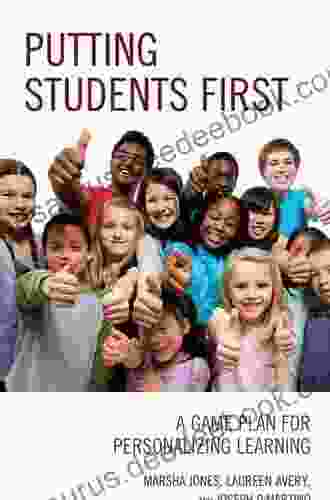
 Jeremy CookThe Ultimate Game Plan for Personalizing Learning: A Comprehensive Guide for...
Jeremy CookThe Ultimate Game Plan for Personalizing Learning: A Comprehensive Guide for... Ibrahim BlairFollow ·10.1k
Ibrahim BlairFollow ·10.1k Robert ReedFollow ·4.4k
Robert ReedFollow ·4.4k J.R.R. TolkienFollow ·5.9k
J.R.R. TolkienFollow ·5.9k David Foster WallaceFollow ·5.5k
David Foster WallaceFollow ·5.5k Corbin PowellFollow ·12.4k
Corbin PowellFollow ·12.4k Liam WardFollow ·14.7k
Liam WardFollow ·14.7k Jonathan FranzenFollow ·11.6k
Jonathan FranzenFollow ·11.6k Charles DickensFollow ·7.9k
Charles DickensFollow ·7.9k

 Gary Reed
Gary ReedWeb to Web for Beginners: A Comprehensive Guide to...
In today's interconnected world, websites...

 Elliott Carter
Elliott CarterThe Moon Is Down: John Steinbeck's Poignant Portrait of...
In the annals of literature, John...

 Dalton Foster
Dalton FosterMark The Mechanic: The Incredible Story Of A Young...
In the vibrant realm of robotics, where...

 Fred Foster
Fred FosteriPhone 13 Pro Max User Guide: Everything You Need to Know
The iPhone 13 Pro Max...

 Rodney Parker
Rodney ParkerPope John Paul II: The Pocket Giant Who Inspired Millions
Pope John Paul II, or...
5 out of 5
| Language | : | English |
| File size | : | 5130 KB |
| Text-to-Speech | : | Enabled |
| Screen Reader | : | Supported |
| Print length | : | 384 pages |


